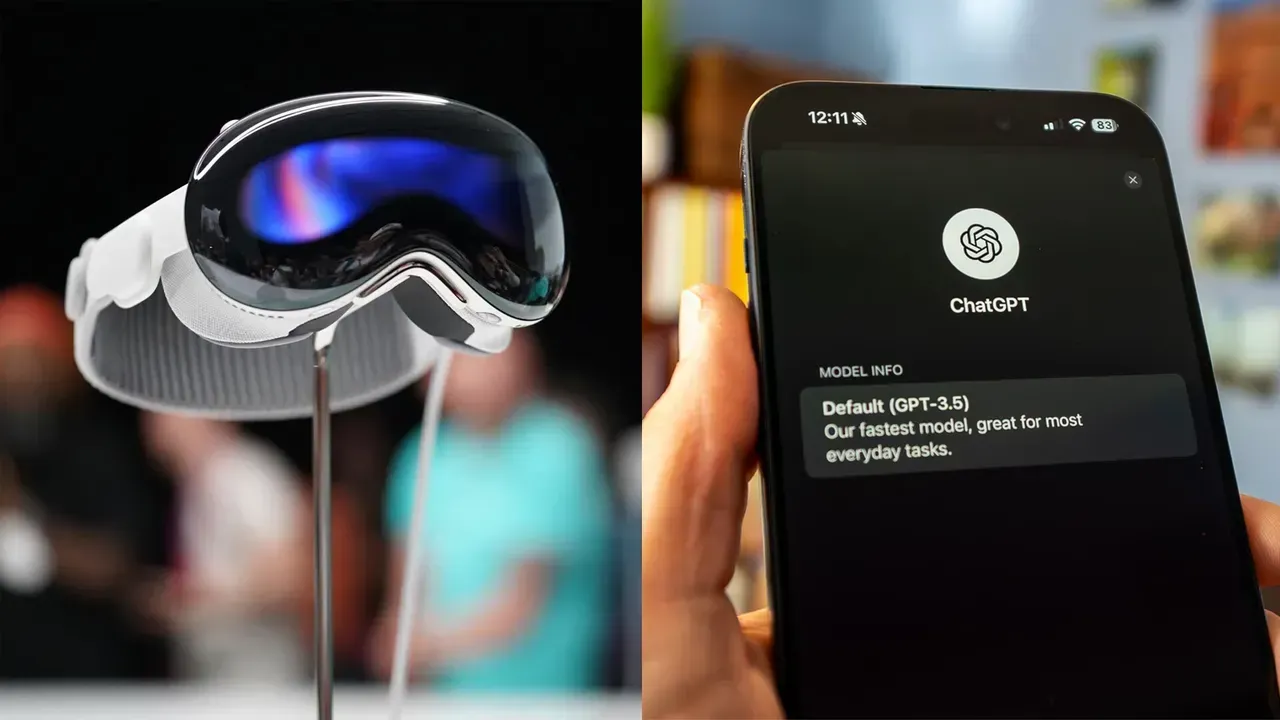Written by Jason Hiner, Editor in Chief
Dec. 7, 2023 at 5:00 p.m. PT


Written by Jason Hiner, Editor in Chief
Dec. 7, 2023 at 5:00 p.m. PT
Government scrutiny of big tech and a series of iterative upgrades of iconic products such as the iPhone have largely dominated the last decade in tech. Not since the rise of 4G unleashed a wave real-time apps such as Uber and Airbnb have new innovations been the main story in tech.
But 2023 was a different kind of year, dominated by the stories of two big breakthroughs.
While ChatGPT technically launched in November 2022, it unleashed a wave of new innovations and intense interest in AI that rippled throughout 2023 and made it the biggest story of the year.
ChatGPT's biggest breakthrough is making technology feel more human. Unlike Google, the internet, and other forms of search where you have to know specific phrases and syntax for talking to computers and getting the best results, you can ask ChatGPT questions in the same kind of natural language you would use if you were chatting with a person. And the results you get back are often so startlingly good and helpful that it has taken the world by storm. ChatGPT reached its first million users in just 5 days and broke 100 million active users in January 2023, just two months after it launched. It's now approaching 200 million.
ChatGPT is so good at sounding like a person that it sometimes fools people into thinking it's more capable than it actually is. It can even lull us into thinking that it might be staggeringly smart like science fiction AIs such as Data in Star Trek or even scary like AIs in the movies such as The Terminator or iRobot. However, ChatGPT is simply very good at understanding questions, searching massive amounts of publicly available data very quickly, and imitating human speech patterns when providing answers.
The real magic behind this technology comes from the Large Language Models (LLMs) that power it. That's the tech that makes generative AI -- or conversational AI -- happen. OpenAI's GPT-4 is the LLM behind ChatGPT, but there are now many other LLMs and that's a big part of the 2023 story as well. Google's Gemini LLM, which powers Bard (its ChatGPT competitor) is one of the newest, but others such as Meta's Llama 2 and Amazon's Olympus are potentially competitors to ChatGPT as well as LLMs aimed at other purposes.
Of course, LLMs and generative AI can be used for far more than just creating chatbots. Some of their other uses can include:
And we're just scratching the surface here. LLMs are getting faster, more efficient, and more capable and the number of problems they will be used to tackle in the future is likely to be exponentially larger.
The metaverse may have flamed out in 2022 with the crash of the cryptocurrency market and the general lack of interest from mainstream consumers, but something infinitely more interesting rose from their ashes in 2023. It was the huge resurgence of interest in next-gen, three-dimensional experiences in AR and VR and it was largely powered by the promotional engine of one company: Apple.
At its Worldwide Developer Conference in June, Apple took the wraps off its Vision Pro headset -- a project seven years in the making. It wowed the developer community, technology analysts, and the media with a quality and fidelity of mixed reality experiences that have never been seen in a standalone consumer headset that wasn't tethered to a powerful computer. In fact, Apple didn't refer to Vision Pro as a mobile device but as a new kind computer -- a spatial computer.
After my hands-on demo of the Apple Vision Pro at WWDC, I wrote, "Apple has made breakthroughs with the Vision Pro that will redefine technology, productivity, and entertainment for the next decade."
While the release of Apple Vision Pro is still months away, I stand by those words. I've tested various augmented reality, virtual reality, and mixed reality headsets over the years, but the Vision Pro is the first one where I couldn't wait to try it again as soon as I was finished using it for the first time. That's because the experiences were so real and so compelling.
Also: These 5 major tech advances of 2023 were the biggest game-changers
Of course, Apple Vision Pro will cost $3,500 and the 1.0 version will have a limited audience. But it's going to open the door to a new level of mixed reality experiences and get a lot more consumers interested in trying them.
Case in point: After my Vision Pro demo I was eager to try the $500 Meta Quest 3 with its newly upgraded displays when it launched in October. I quickly discovered that the Supernatural app on the Meta Quest 3 was a far more fun and engaging way to do cardio workouts than using a treadmill, elliptical, or stationary bike -- and that's something Vision Pro won't do at launch.
The bottom line is that Apple's entrance into this space has lit a fire of consumer interest in VR and AR. I saw it on a Saturday in November when I walked into a Best Buy and saw a double line of 10-15 kids and their parents waiting to try out the Quest 3 as two Best Buy employees quickly wiped down headsets and handed them to the next kid in line. And it was never more apparent than on Black Friday and Cyber Monday when Meta's Quest 2 and Quest 3 outsold Apple AirPods and AirPods Pro on Amazon.
It's possible that ChatGPT and Apple Vision Pro have both given us iPhone moments -- the release of a new product that will define what comes after them and spawn a whole new generation of products and experiences. Only time will tell. But it's clear today that ChatGPT and Apple Vision Pro have injected tech with an optimism and energy that's been missing in recent years. And for that, they both get a well-earned hat tip.

Matter acknowledges the Traditional Owners of country throughout Australia and recognises their continuing connection to land, waters and community. We pay our respects to them and their cultures; and to elders both past and present.